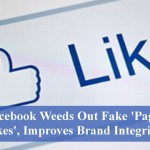 New York — In a fresh bid to help advertisers fine-tune their targeting, micro-blogging outfit Twitter has shifted its strategy of sifting through what each user is reading and tweeting to determine their interests. The company over the weekend said that it will begin allowing advertisers to target users based on the interests they reveal in their tweets, the social media company said following a successful test of a new advertising feature.
New York — In a fresh bid to help advertisers fine-tune their targeting, micro-blogging outfit Twitter has shifted its strategy of sifting through what each user is reading and tweeting to determine their interests. The company over the weekend said that it will begin allowing advertisers to target users based on the interests they reveal in their tweets, the social media company said following a successful test of a new advertising feature.
The micro-blogging hub is tweaking the way advertisers can target users, a move that could attract more companies to advertise with the social media site and boost its revenues.
Depending upon what a user tweets, ads will appear that target the user based on their interests. So, for instance, if a consumer who has indicated an interest in gardening would be shown ads for gardening and outdoor-living products.
There are two different ways Twitter will separate and narrow down its 140 million monthly active users. Further, in an effort to invite more advertisers to its paid ads program, the company also slashed the minimum price of “promoted tweets” to just a penny. So, those employing Twitter’s Promoted Tweets and Promoted Accounts can start targeting campaigns based on interests of their choosing.
Among the numerous features added to Twitter’s other advertising offerings, including Promoted Tweets, Promoted Accounts and Promoted Trends, as it seeks to make the platform productive for advertisers while not distancing its users.
During the beta test, advertisers saw “high engagement rates because they are reaching users who are interested in their content,” wrote Kevin Weil, director of product management. “Given these early results, we are thrilled to make interest targeting available today.”
One way marketers will be able to choose from 350 interest categories into which Twitter has refined their ad campaigns. These range from “education” to “home and garden” to “investing” to “soccer” and are further divided into subcategories. “Dogs” is a subcategory under “pets,” for example; “cartoons” is a subcategory under “hobbies and interests.”
More importantly, in a blog post describing its new targeting capabilities, Twitter gives the example of a marketer promoting a new animated film about dogs. The advertiser would select “animation,” a subcategory under “movies and television,” as well as “cartoons” and “dogs.”

The two-level interest hierarchy is composed of more than 350 categories.
“By targeting people’s topical interests, you will be able to broaden your reach to a greater number of users and deliver tailored messages to people who are more likely to engage with your Tweets,” says Weil. “When people discover offers and messages about the things they care about on Twitter, it is good for both marketers and users.”
As a matter of fact, CEO Dick Costolo has recently mentioned that his company’s value lies in its ability to mine its flow of information to build “an interest graph” showing its users’ preference profiles — which could be used by marketers to deliver targeted and relevant ads.
For example, sports apparel retailers can target soccer enthusiasts for promotions, or film distributors might send tweets directed at keen Bollywood fans. Besides, more specific targeting can be achieved with “custom segments,” where an advertisers can associate certain “@usernames” that are relevant to their product or service with their campaign.
That kind of targeting, however, does not allow for specific targeting of the followers of the particular @username specified, Weil wrote.
Hence, “If you are promoting your indie band’s next tour, you can create a custom audience by adding @usernames of related bands, thus targeting users with the same taste in music,” he wrote. “This new attribute will help you reach beyond your followers and users with similar interests and target the most relevant audience for your campaign.”
On the other hand, Twitter engineers maintain that they can devise a compelling ad delivery platform, particularly if marketers craft ads that seem to blend in with the tone and format of the service’s flow of tweets, which are seen by some 140 million monthly active users.
Along with new ads, Weil wrote that Twitter was lowering its minimum bid for its Promoted products, which are sold by action, to $.01. The new lower bid, according to Weil, will mean a better return on investment for advertisers and their campaigns.


